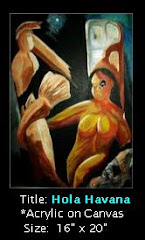My twin brother makes his living as an infamous banjo player, but my musical ambition was to grow up to play second shotgun in the Spike Jones Orchestra. Alas, Spike died in 1965, before I could really handle a 12 gauge, and so that dream died with him.
But the zany music of Lindley Armstrong `Spike’ Jones lives on.
Although he started out as a `straight’ musician, playing percussion with Victor Young’s orchestra and then the John Scott Trotter Orchestra throughout much of the 1930s, Spike emerged from the background in 1941 with the formation of his City Slicker’s band.
Spike was to big band music what the Marx Brothers were to to the movies.
Utilizing a madcap array of cowbells, gunshots, whistles, pots & pans, chicken clucks, hiccups, sneezes, and other unusual vocalizations, along with some truly fine jazz musicians they produced a string of novelty hits that spanned three decades.
Amplifying and building upon the antics of earlier novelty orchestras (and contemporaries) like The Hoosier Hotshots, and Freddie Fisher and the Schnickelfritz Band, Spike Jones and his City Slickers struck gold in 1942 with a wickedly funny parody of Adolph Hitler called In Der Fuehrer’s Face.
The song was featured prominently in a 1943 Donald Duck cartoon by the same name, and became one of the best remembered of the war-era songs.
Below, a short Movietone News performance of Der Fuehrer’s Face by Spike & Company while on a war bonds tour.
What would follow would be a series of highly successful musical parodies, a popular radio show (plus numerous guest appearances across the radio dial), movie shorts and guest shots in feature films, many early appearances on TV, and a couple of TV shows of his own.
Between Youtube and the Internet Archive, we’ve numerous videos and recordings to sample.
An early example comes from a `Soundie’ – a precursor to today’s music video – which could be viewed on video jukeboxes placed in bars and restaurants during the 1940s (see Soundies . . . Music Videos Of The Past).
This one is from 1942.
One of their most enduring songs was `Cocktails For Two’, which was written in 1934 at the end of prohibition by Arthur Johnston and Sam Coslow and debuted in the movie Murder at the Vanities (1934).
The song is remembered today, however, due to the 1944 send up by Spike and his Orchestra. Starting off by playing sweetly, in short order mayhem ensues.
One of the secrets to his success is that his musicians – while playing for laughs – were arguably some of finest jazz performers in the business.
Next we’ve a 30 minute NBC TV show from the early 1950s.
As you can probably tell by now, Spike’s music was as much meant to be viewed as it was to be heard. And that would make him a natural for early television shows of the 1950s.
For more Youtube Videos of Spike Jones, including many segments from his TV show, follow THIS LINK.
Moving over to the Internet Archive, we have more than 50 radio episodes gathered from three different Spike Jones radio shows;
"Chase and Sanborn Program" - 1945 Summer Series
"Spotlight Revue" - 1947/48 Series
"Spike Jones Show" - 1949 Series
Spike Jones
Spike is one of many radio performers you can see in the 1946 movie Breakfast in Hollywood. Also featured are Nat King Cole, Andy Russel, Hedda Hopper, and Billie Burke.
Breakfast in Hollywood
In 1951, Spike hosted the Colgate Comedy Hour.
Spike Jones Colgate Comedy Hour
And for scores of Spike Jones audio recordings, you need look no further than:
The rock & roll revolution in the mid-1950s made it difficult for bigger bands to compete, and comedy records were moving to the spoken word (Tom Lehrer, Bob Newhart, Stan Freberg), but Spike Jones kept recording until the early 1960s.
A lifelong heavy smoker, Spike suffered from emphysema and died far too young in 1965 at the age of 53.
But for his many fans, and thanks to archival sites like Youtube and the Internet Archive, his memory lives on.










